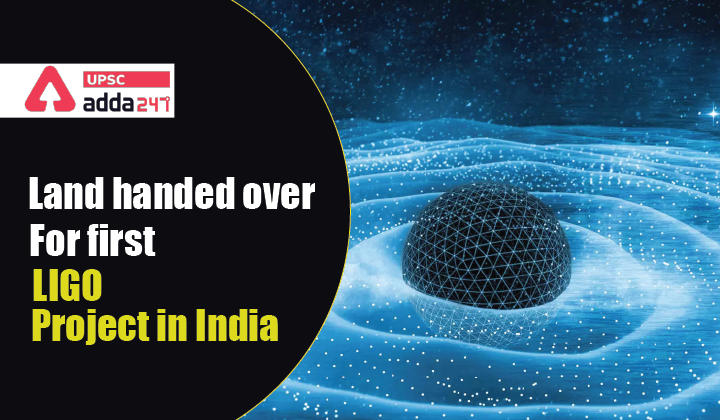Table of Contents
LIGO Project in India: Relevance
- GS 3: Achievements of Indians in science & technology; indigenization of technology and developing new technology.
LIGO Project in India: Context
- Maharashtra Government has handed over 225 hectares of land for the construction of LIGO, the first such facility in India.
LIGO Project in India: Key points
- In 2016, the union government had given an ‘in principle’ approval to the LIGO-India mega science proposal for research on gravitational waves.
- The transfer of the land for the project had earlier been put on hold for some time because of the restrictions imposed due to COVID-19 pandemic.
About LIGO
- LIGO stands for “Laser Interferometer Gravitational-wave Observatory”.
- It is the world’s largest gravitational wave observatory and a marvel of precision engineering.
- LIGO consists of two widely-separated interferometers within the United States—one in Hanford, Washington and the other in Livingston, Louisiana—operated in unison to detect gravitational waves.
- LIGO currently consists of two interferometers, each with two 4 km (2.5 mile) long arms arranged in the shape of an “L”. These instruments act as ‘antennae’ to detect gravitational waves.
- They are called interferometers because they work by merging two or more sources of light to create an interference pattern, which can be measured and analysed.
- LIGO is blind: Unlike optical or radio telescopes, LIGO does not see electromagnetic radiation (e.g., visible light, radio waves, microwaves). It doesn’t have to because gravitational waves are not part of the electromagnetic spectrum.
- LIGO isn’t round and can’t point to specific locations in space: Since LIGO doesn’t need to collect light from stars, it doesn’t need to be round or dish-shaped like optical telescope mirrors or radio telescope dishes.
- A single LIGO detector could not initially confirm gravitational waves on its own. To help electromagnetic observers find a possible light source associated with the detections, we must have multiple detectors – ideally 3 or more – to localize the signal in the sky.
About LIGO-India project
- LIGO-India project is to be built at an estimated Rs 1,200 crore, and will come up at Dudhala village in Hingoli district of Maharashtra.
- The observatory in India will be jointly funded by the Department of Atomic Energy (DAE) and Department of Science and Technology (DST).
- LIGO-India is a collaboration between the LIGO Laboratory (operated by Caltech and MIT) and three Institutes in India: The Raja Ramanna Center for Advanced Technology (RRCAT, in Indore), the Institute for Plasma Research (IPR in Ahmedabad), and the Inter-University Centre for Astronomy and Astrophysics (IUCAA, in Pune).
Also Read:





 TSPSC Group 1 Question Paper 2024, Downl...
TSPSC Group 1 Question Paper 2024, Downl...
 TSPSC Group 1 Answer key 2024 Out, Downl...
TSPSC Group 1 Answer key 2024 Out, Downl...
 UPSC Prelims 2024 Question Paper, Downlo...
UPSC Prelims 2024 Question Paper, Downlo...
